4 Common Techniques for Creating Hanfu Fabrics
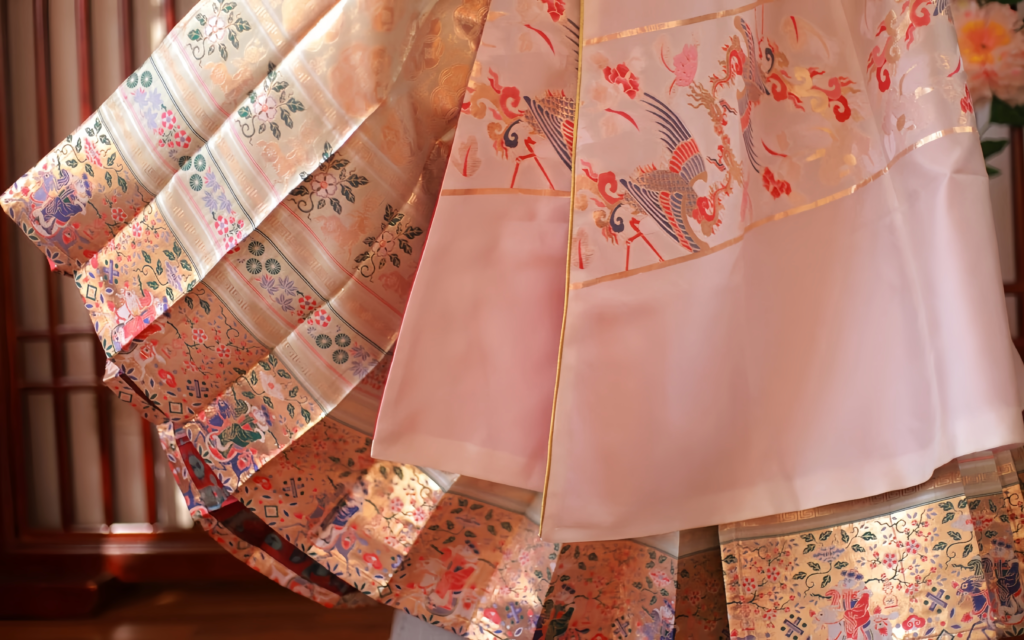
Techniques for Creating Hanfu Fabrics
When it comes to Hanfu (traditional Chinese clothing), both the fabric and the weaving techniques are crucial elements in making the garments. Let’s take a look at some of the most popular Hanfu fabrics techniques used in Hanfu creation.
Zhuanghua (妆花)
Zhuanghua is a highly intricate weaving technique that is most closely associated with Nanjing Yunjin silk, a famous traditional Chinese fabric. It is one of the most complicated and distinct styles in the Yunjin family, particularly popular during the Ming and Qing dynasties. Traditionally, Zhuanghua was made by hand, but nowadays, it is often reproduced using machines, referred to as “imitation Zhuanghua.” This technique is an essential part of Hanfu fabrics, adding depth and elegance to traditional Hanfu garments.
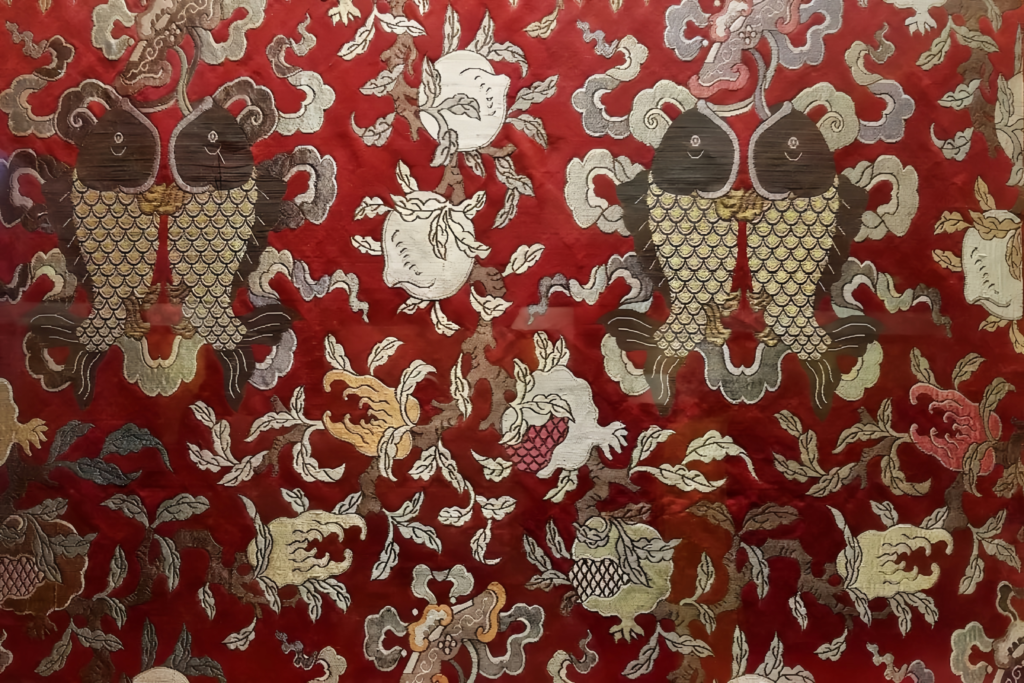
The standout feature of Zhuanghua is its rich use of color. The fabric’s pattern is woven using colored velvet weft yarns, and the color combinations are incredibly diverse—there are no strict limitations on how many colors can be used. Some patterns incorporate two or three layers of color, while others may only use one, such as in the depiction of flower stems, leaves, and buds.
In total, a single piece of Zhuanghua fabric may have up to 20 or even 30 different shades. Despite the wide range of colors, the design remains harmonious and balanced, giving the fabric a lively and artistic appeal that makes it both beautiful and visually stunning. These qualities make Zhuanghua an iconic example of Hanfu fabrics techniques that continue to captivate people worldwide.
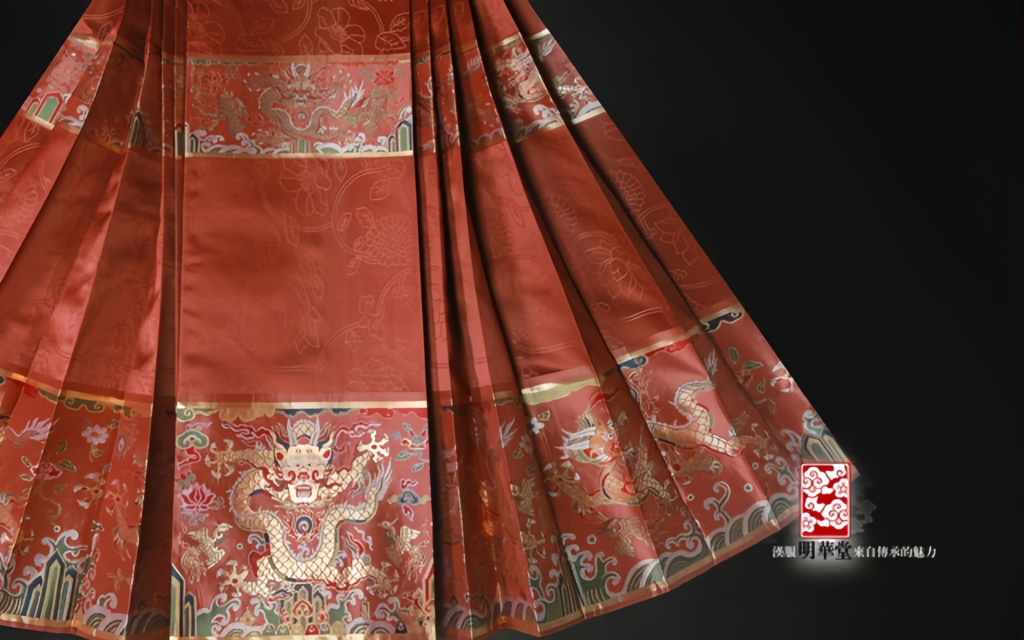
Xiuhua (绣花)
Embroidery, or Xiuhua, is one of China’s most treasured traditional crafts. The process involves stitching intricate designs onto Hanfu fabrics using colorful threads, such as silk, yarn, or thread, to create beautiful patterns or even written characters. Hanfu fabrics techniques like embroidery have been perfected over centuries, showcasing the skill and artistry of Chinese artisans.

During the Tang and Song dynasties, embroidery was known for its delicate, fine stitches and vibrant colors, often used in artwork, decorations, and clothing. By the Ming and Qing dynasties, imperial court embroidery had grown to great sophistication, and the craft was also flourishing in the folk sphere, with famous regional styles like Suzhou embroidery (Su Xiu), Canton embroidery (Yue Xiu), Hunan embroidery (Xiang Xiu), and Sichuan embroidery (Shu Xiu). These are collectively known as the “Four Great Embroideries of China,” and they continue to influence Hanfu fabrics today.
Other notable regional embroidery styles include Gu embroidery, Beijing embroidery, Ouyang embroidery, and Miao embroidery, each with its own unique characteristics. Embroidery has many uses, from everyday clothing to ceremonial attire, and even home decor items like tablecloths, pillowcases, and wall hangings.

Yinhua (印花)
Printing, or Yinhua, is a process where dyes or pigments are applied to fabric to create patterns. The technique used in Hanfu includes three main types: fabric printing, mixed-color printing, and yarn printing. Fabric printing is the most common, while mixed-color printing is used to create fabrics like tweed, and yarn printing is reserved for special, colorful fabrics.

The ancient Chinese began using hollow printing as early as the Warring States period. Today, screen printing, which evolved from hollow printing, is commonly used for small batches of textiles. The patterns chosen for printing typically dictate the printing technique used. The three most common Hanfu fabrics techniques are:
- Direct Printing: This is the simplest method, where dyes or pigments are directly printed onto white or light-colored fabric and then steamed to fix the pattern. It is quick and widely used.
- Resist Printing: In this technique, a substance is first printed on the fabric to prevent dye from adhering to certain areas. The fabric is then dyed, creating a pattern in the areas where the resist substance was applied.
- Extraction Printing: This involves printing a pattern on already dyed fabric, where the dye is removed from certain areas to form the desired design.
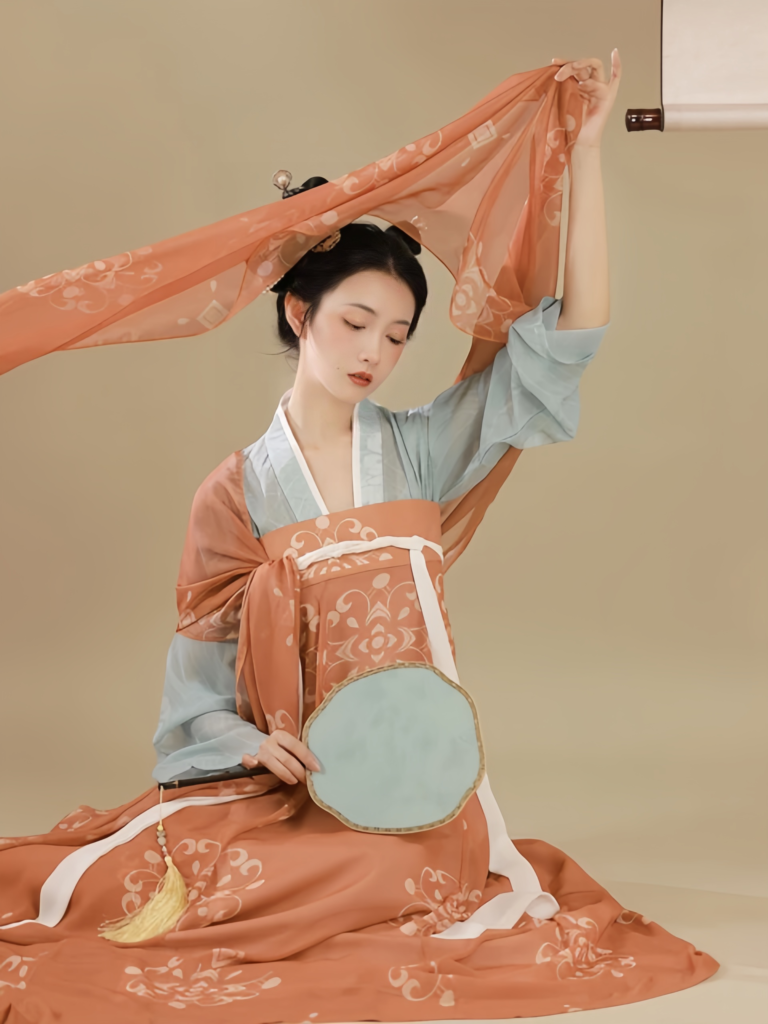
Tihua (提花)
Tihua refers to jacquard weaving, a technique that creates raised or textured patterns on fabric using interlaced warp and weft yarns. This type of fabric is known for its high quality, often requiring finer cotton yarn to produce detailed patterns. If the cotton is of poor quality, it may not be able to form clear and consistent patterns.
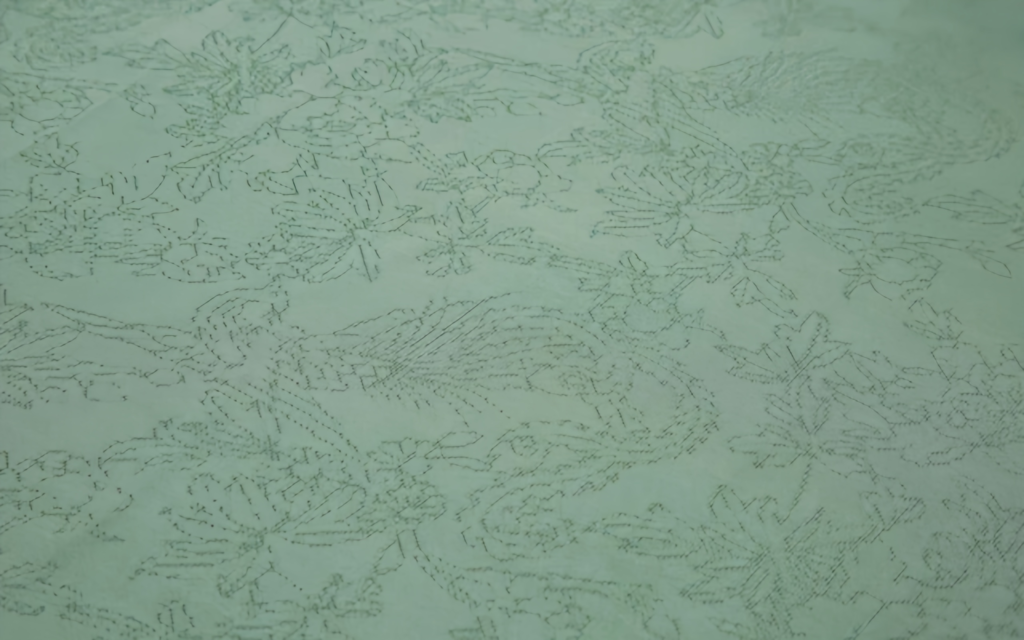
There are two main types of jacquard fabric: plain weave jacquard and twill weave jacquard. Jacquard fabrics are highly versatile, used not only in casual pants, sportswear, and suits, but also in Hanfu, where the fabric’s comfort and unique texture are highly valued.
It’s important to note the difference between printed fabric and jacquard fabric. Printed fabrics are typically printed after the fabric has been woven, allowing for a wider range of design options. In contrast, jacquard fabrics are woven with the patterns already built into them, meaning once the fabric is created, the design cannot be changed.This unique technique is what makes jacquard fabrics an essential component of many Hanfu fabrics.
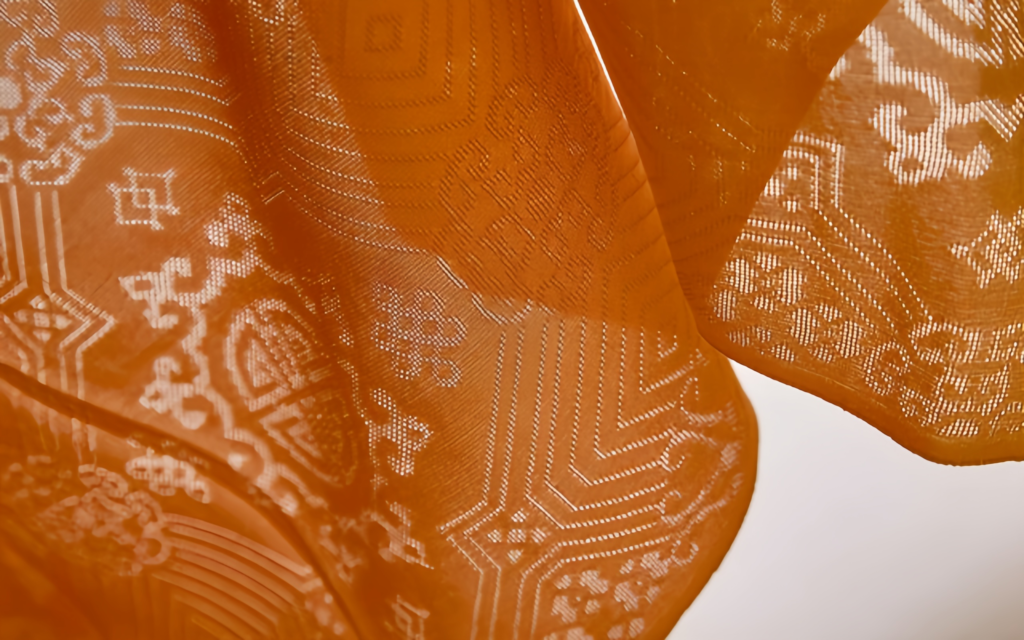
Conclusion
The techniques used in Hanfu fabrics creation are not only a testament to ancient Chinese craftsmanship but also a reflection of the cultural richness and artistry of traditional clothing. Zhuanghua, Xiuhua, Yinhua, and Tihua are just a few of the many methods used to create these iconic garments. Whether you’re a history enthusiast or simply a lover of traditional Chinese art, understanding these techniques offers a deeper appreciation for the intricate details of Hanfu.
For more insights into the history of Chinese textiles and Hanfu, explore additional resources on China’s Traditional Crafts.


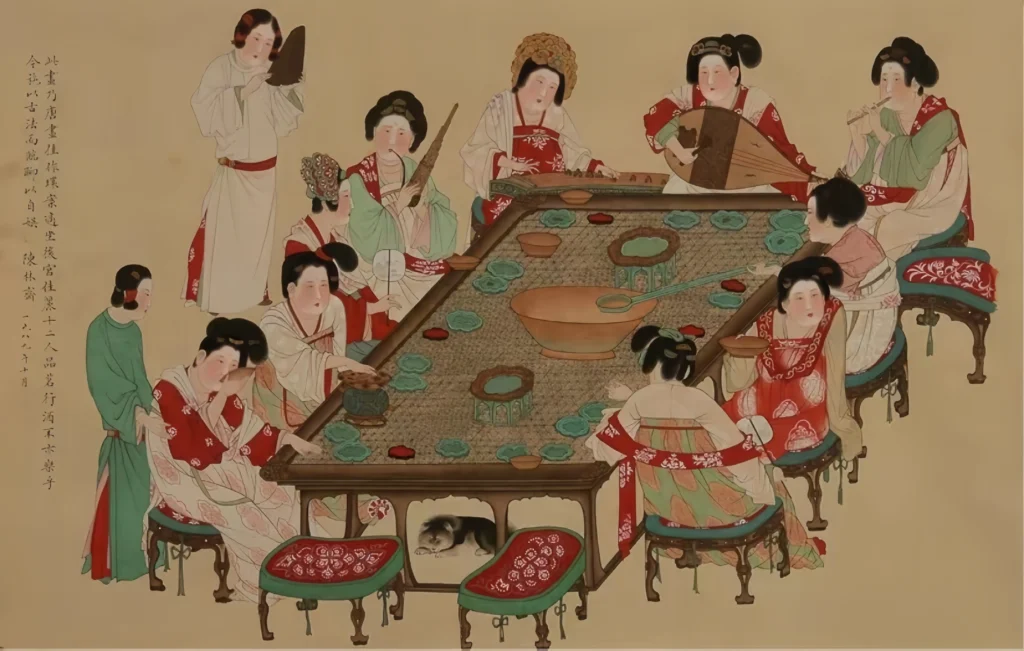

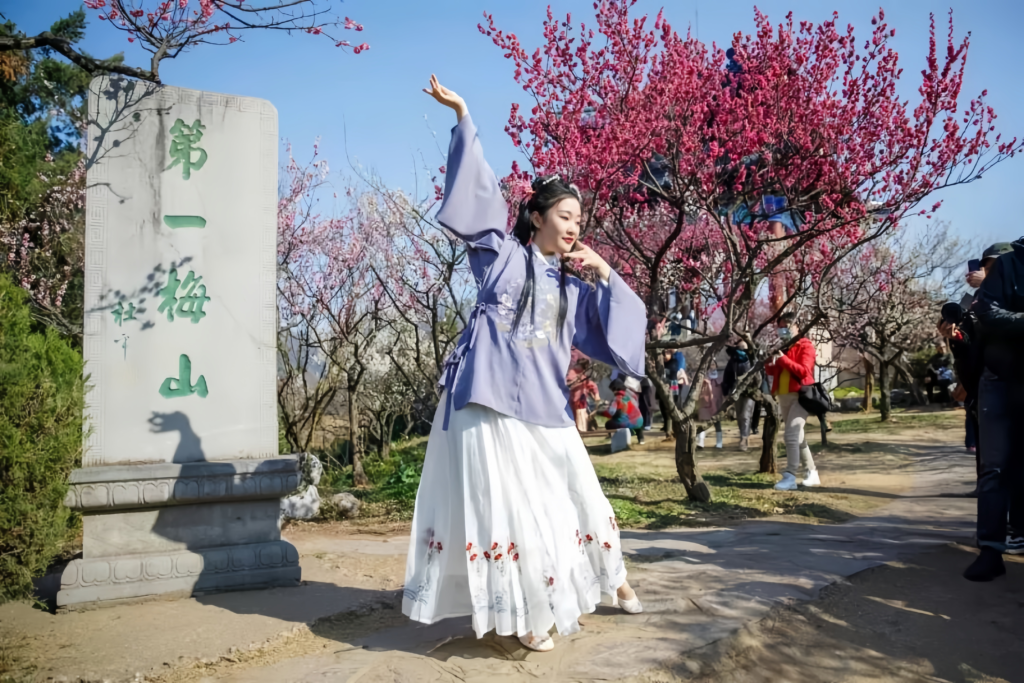
[…] Ming hanfu stands out for its heavier fabrics and layered silhouettes, making it ideal for autumn and winter. Unlike lightweight summer hanfu, Ming styles use thicker materials like wool blends or lined cotton, offering warmth without sacrificing elegance. The loose cuts allow for discreet layering, so you can add thermals or sweaters while maintaining a regal look. For more on hanfu fabrics, check this guide. […]